Gov. Kelly Ayotte lifted the statewide burn ban Wednesday, and within moments of finding out, Lakes Region fire departments have already received permit requests from residents who have been anxiously waiting to burn brush piles.
“We have had people see our Facebook post and the news that is coming out, and have called to make sure their permit is still valid,” Laconia Deputy Fire Chief Louis Loutrel said Wednesday.
The burn ban had been in effect since Sept. 22, following what state leaders described as the driest summer since 1895. Ayotte issued a proclamation lifting the ban on Wednesday morning, which was approved by the Executive Council.
“This brief outdoor burn ban helped keep our great outdoors safe during a busy time for camping and hiking,” said Ayotte. “I want to thank Granite Staters for their understanding and assistance as we took this important step to protect our forests, and I am glad to be able to lift the burn ban today.”
The lifting of the ban allows for kindling of open fires, which includes campfires and burning of debris, as long as a permit is obtained. Smoking in or around public woodlands and public trails is now allowed, as well.
Steven Sherman, chief of the New Hampshire Forest and Protection Bureau, advised residents to remain cautious, and to dispose of wood stove ash safely by placing the cooled ashes in a covered metal container away from buildings and other flammable materials.
“While the recent rain has helped make up for the deficit we’ve experienced this year, the increase in dried leaves and grasses on the ground that accumulate in the fall, combined with seasonal winds that accelerate drying them out, mean that there’s still existing wildfire risk,” Sherman said in a prepared statement.
Sherman spoke in an interview Wednesday afternoon, saying the burn ban has been lifted because the weather pattern has changed to have more frequent wet periods. While this helps with surface fuels, the drought remains, which will most likely be the case until winter.
He explained that at 4 to 6 inches into the ground, it starts to become dry, but surface fuels with the highest potential for carrying a wildfire are staying wet. This could change, he noted, if the state gets into another dry pattern coinciding with leaves coming off the trees.
Sherman reminds the public they still need to get a permit through their local fire department, and there are some areas around the state that may not allow for larger fires. Once permits are obtained, Sherman suggests having a shovel or another hand tool nearby to take care of any embers, and it is always good to have a water source ready.
“When it is done, make sure the fire is completely extinguished,” he said. “Put water on it, stir around the water and ashes, feel it, and if it is not cold to the touch, repeat until it is cold. Otherwise, there is a potential that it will reignite and cause a fire.”
The public has responded well to the burn ban, and Sherman said one great result of having it statewide is that it made people aware of the dry conditions.
“Overall, we saw a reduction of fires during that period,” Sherman said. “It served its purpose and did what it was intended to do.”
Sherman said the intent of the burn ban was not just to discourage outdoor fires, but also allowed leaders to continually evaluate conditions, and reduce the chance of wildfires.
“Most people would agree that we are in a much better situation than we were a month ago,” Sherman said. “We had to wait for things to catch up, as far as soil moisture. Once that was good, we could remove it.”
Loutrel pointed out 53% of the state is still in an extreme drought despite recent rain, so he echoed Sherman’s comments about making sure fires are extinguished properly.
During the ban, Laconia had four “larger outside fires,” with two requiring outside assistance. Some of these were in wooded areas, reportedly started by unsheltered people.
Tilton-Northfield Deputy Fire Chief Sean Valovanie said within a half hour of the ban being lifted, his department issued three permits.
“People are aware and excited to burn their brush,” Valovanie said.
He said most people adhered to the rules during the ban, but others were not aware it was statewide. Valovanie said they needed to educate some members of the public, but everyone has been understanding, and the department saw no pushback.
Tilton-Northfield Fire Rescue was extremely busy in the days leading up to the burn ban with several brush fires, including a string of five along Interstate 93 and on Bay Street in Northfield on Sept. 17. It was a scenario where the department responded to one, and then found there were more, and had to work their way down the line, extinguishing one fire at a time.
No injuries were reported, and the blaze didn’t damage any structures, but it took attention from plenty of firefighters from departments throughout the Lakes Region to put out. In this scenario, Valovanie said it was so dry the fires could have been caused by the heat of a vehicle, and in other instances, fire personnel said all it takes is the flick of a cigarette butt.
Like Laconia, Tilton-Northfield responded to just a few fires during the ban. One was near Lochmere Country Club and appeared to be a campfire in the woods that got out of hand. Valovanie said the fire was deep into the ground and got to tree roots. There were also two fires at encampments for unhoused people which needed to be extinguished.
Although the conditions are far better now, Valovanie said it is still dry, and urges the public to be safe and adhere to forest and land rules. If any issues arise, call 911 immediately.
Gilford Fire Chief Steve Carrier said with the lifting of the burn ban, his department will start issuing permits again. While he had not issued any new permits yet on Wednesday, aside from at the town’s recycling center, he knows there are plenty of people waiting to burn the brush piling up in their yards.
“The recycling center has a huge pile of brush now, and will start tomorrow morning to separate and burn it in a controlled fashion,” Carrier said Wednesday.
Carrier said the biggest hazard during the fall season is when the leaves start dropping and drying out quickly. The state’s fire warning is listed as “moderate,” but he said fire danger can quickly fluctuate this time of year, especially on windy days.
“The night has been cold and producing dew, so the ground has been moist in the morning,” Carrier said. “But the sunny and windy days could bring a high fire danger in the afternoon.”
Belmont Fire Chief Deb Black said her department will educate people about using common sense, but will be back to issuing permits. She also said the coming rain should be helpful, and to be careful if the wind picks up.
Those looking to have an outdoor fire of any kind are instructed to contact their local fire department for a permit. Many communities have seasonal permits, which would be in effect, but there are also temporary permits for brush burning.
For more information, log on to nhfirepermit.com.






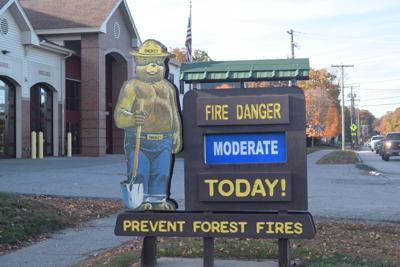

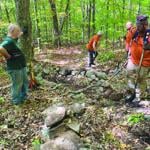



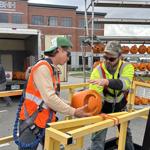

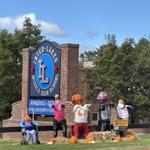
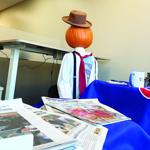


(0) comments
Welcome to the discussion.
Log In
Keep it Clean. Please avoid obscene, vulgar, lewd, racist or sexually-oriented language.
PLEASE TURN OFF YOUR CAPS LOCK.
Don't Threaten. Threats of harming another person will not be tolerated.
Be Truthful. Don't knowingly lie about anyone or anything.
Be Nice. No racism, sexism or any sort of -ism that is degrading to another person.
Be Proactive. Use the 'Report' link on each comment to let us know of abusive posts.
Share with Us. We'd love to hear eyewitness accounts, the history behind an article.